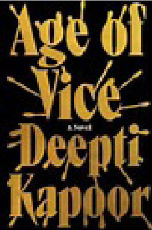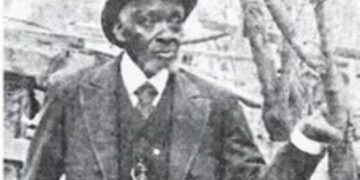
Actually, I was convinced to buy the novel after reading a review by Ron Charles in the Washington Post Book World. He declared Age of Vice a “dazzling explosion,” admitting that the novel gripped him so strongly that “now all I want to do is get others hooked.” Clearly, he achieved that aim with me.
Deepti Kapoor, the author, was born in Northern India, attended an all-girls boarding school, and earned two degrees at Delhi University: her undergraduate degree in journalism and her master’s in social psychology. She currently lives in Lisbon, Portugal. In an interview with Scot Simon on NPR, Kapoor reveals that much of the content of Age of Vice came from her years as a journalist in Delhi. Neda, in the novel, shares some of her history, including the early death of her father and the time Kapoor spent socializing with the new-money residents of the city. Though at that time she did not plan to become a novelist, “I was taking a lot of mental notes. A lot of times these notes were being taken while I was stoned or drunk. I was basically observing all the time.”
Kapoor’s first novel, A Bad Character in 2015, received little attention, even though a reviewer for The Huffington Post described it as “A fiery, incandescent debut [that] artfully captures the perilous desire of a woman alone in New Delhi… Promises great things to come.” For the next nine years, Kapoor worked on Age of Vice; the novel gained strong attention well ahead of its publication. In 2019, after a bidding war, Kapoor sold the novel to FX and Fox 21 for over six figures. An online series is apparently in the works.
Set in India between 2004 and 2008, Age of Vice gives strong—and uncomfortable—insight into the development of a country steeped in corruption—personal, commercial, and political. To illustrate the extent of this corruption, Kapoor uses three central characters: Ajay represents the lowest social class; Neda, is a representative of the elite upper class; and Sunny Wadia is the son of a newly wealthy and utterly corrupt New Delhi businessman. Using these characters almost like inhabitants of a modern allegory, Kapoor creates a society overcome by uncontrollable corruption and violence.
Kapoor designates Ajay as the central character of her novel, calling him “an oppressed everyman.” Ajay’s family is so poverty-stricken that after the death of his father, his mother sells him as a near-slave; taken to a remote area of the country, he works for a couple who give him food and shelter but make him eat off the floor. Eventually, he becomes a cafe worker at a remote beach resort where he meets Sunny Wadia who takes him on as a general factotum. Ron Charles writes, “Ajay latches on to young Sunny with the desperation of a groupie and the discipline of an acolyte.” Idolizing Sunny to the point of doing anything that he asks, Ajay goes to jail for a crime committed by one of Sunny’s cronies.
Kapoor says that she based Sunny on “young men I used to see in my 20s when I lived in Delhi… I had a lot of very wealthy friends.” She calls Sunny “a tragic figure… who wants to be good.” But money and his father’s rejection ruin Sunny, who in his early twenties, is already immersed in a life of alcohol, women, and drugs that will ultimately destroy him. Charles calls him an “Indian Gatsby,” but Sunny’s aspirations are not fueled by the same idealism that lies behind Jay Gatsby’s dream. Sunny’s dream is to gain the respect of a father who requires him to be “ruthless” in pursuit of financial success. Though Kapoor gives Sunny positive qualities like a conscience and a love for beauty, his devotion to gaining his father’s approval wins out.
Neda comes into the picture as a journalist for a New Delhi newspaper. She is a recent college graduate, not sure, at this point in her life, what she wants to make of it. Meeting Sunny Wadia, she is seduced both by his physical charms and his extreme wealth. For a while, the luxuries (including drugs) he provides put her into a near-hypnotic state. The two “fall in love,” but expect no happy endings for their relationship.
Age of Vice is long (546 pages in the hardback) and full of extreme violence some readers may find too repulsive but her ability to create fascinating characters stands out in her creation of both major and minor characters. She asserts that writing the novel made her “more sensitive to the pain of others.” The novel ends with Ajay, Sunny, and Neda in various stages of agony that give Kapoor much to deal with as she writes a second novel in a planned trilogy.





























